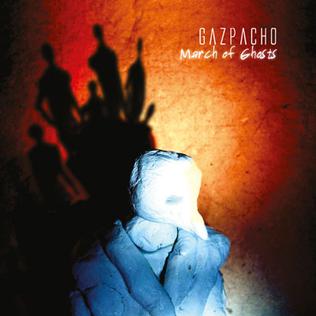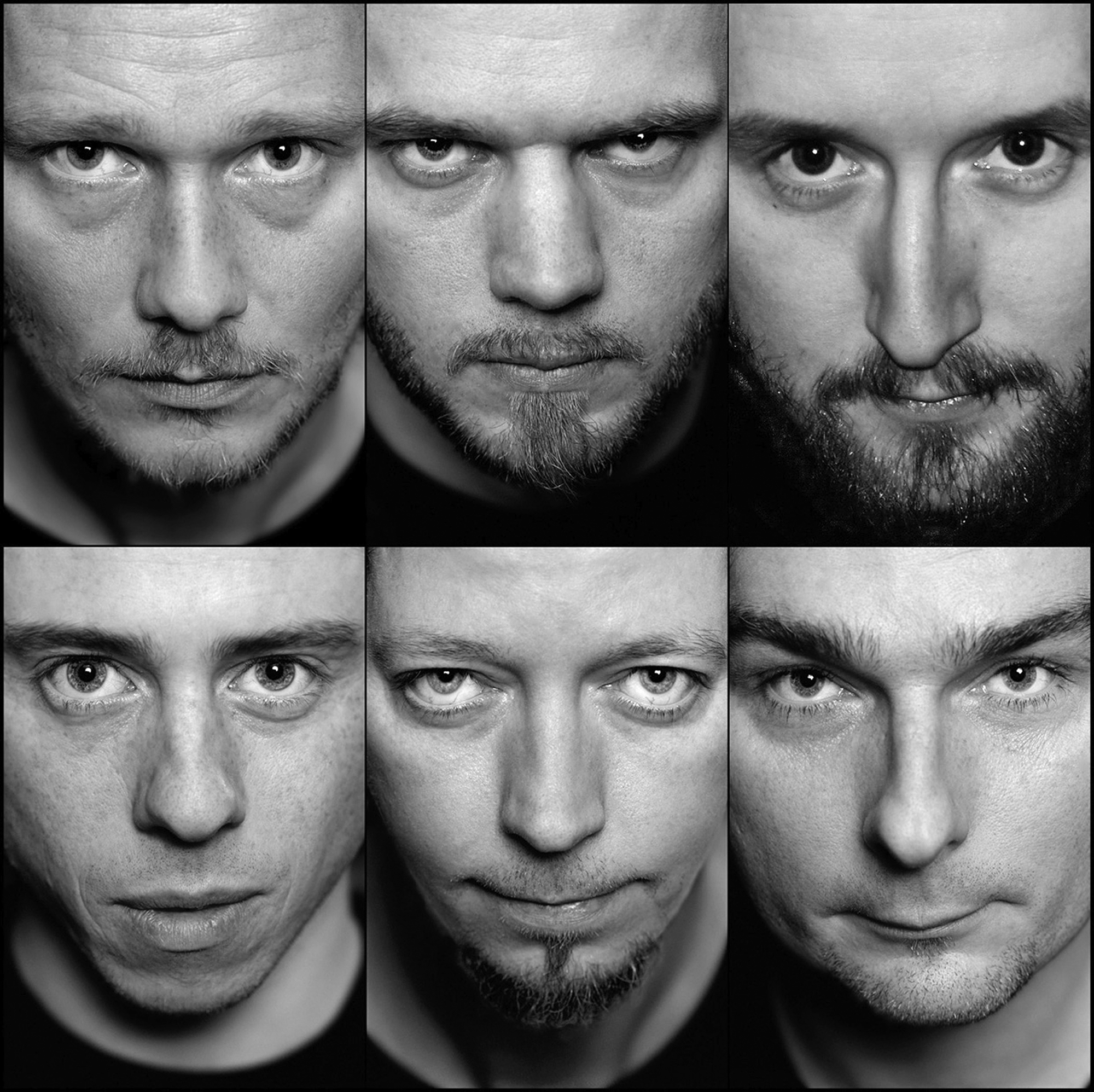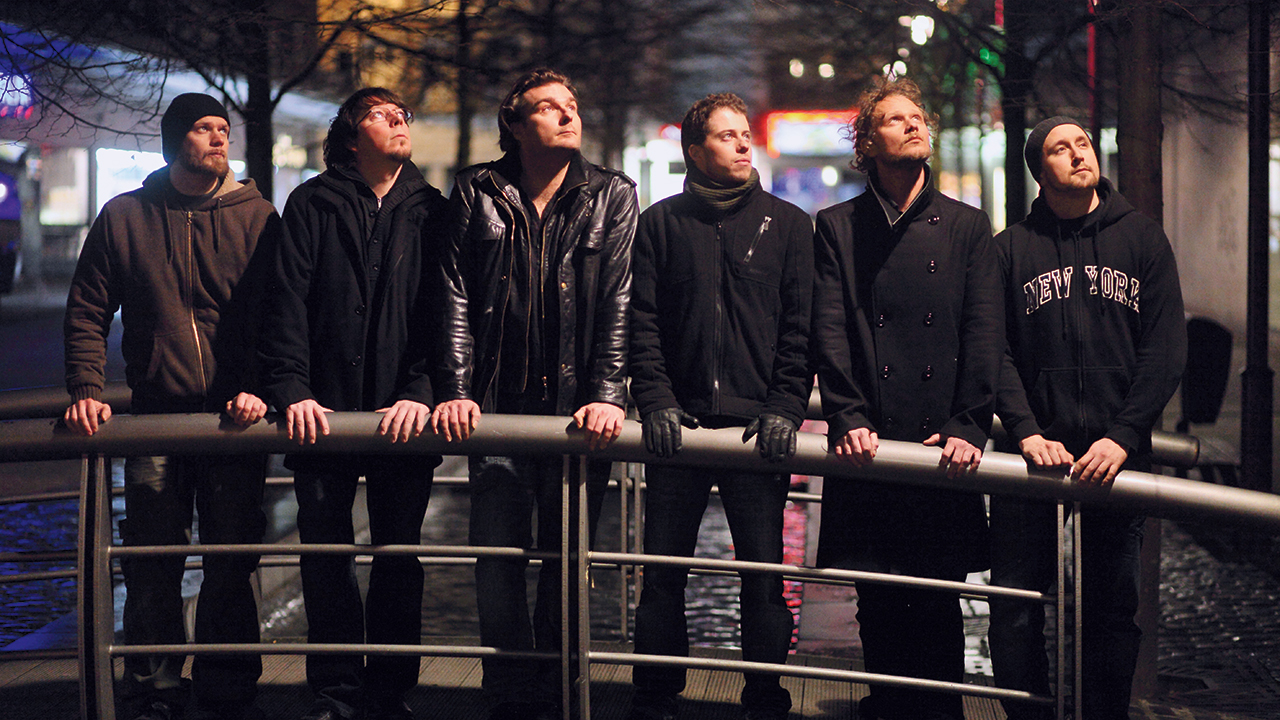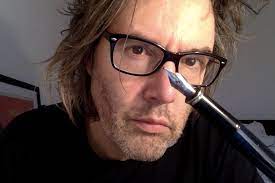The frozen forest is filled with ghosts, revealing themselves as dusk falls. Figures flit in and out of the trees among the slow swirl of snowflakes. At night Gazpacho’s keyboard player and founding member, Thomas Andersen, rides through these Norwegian woods off-road and along trails, pedalling hard on his mountain bike, his breath opaque clouds, spirits and memories floundering in his wake of slush and snow.
Surrounded by the dark on two wheels and with his band’s music blaring through his headphones, it’s how Andersen likes to unwind and sometimes write. The band’s latest album, a concept piece called March Of Ghosts, details one night in the lead protagonist’s life where he’s visited by a parade of spirits, each with their own story to tell. Think Dickens’ A Christmas Carol on a very grand scale. It’s a broad spectrum of the dead that includes Haitian war criminals, the crew of the Marie Celeste, and an American soldier who served in World War II and returns only to find himself caught in the present day. It’s an ambitious undertaking and one that Andersen helped resolve with his night-time rides through the woods.
“The song Marie Celeste really came to life while I was out riding in the woods,” Andersen reveals, from his home in the countryside just outside of Oslo. It’s minus-eight degrees outside and Andersen’s nursing a mug of coffee just to keep his hands warm, while a log fire burns in the hearth. “That was the hardest song to get right on the album,” he continues. “Part of the reason was that the chorus sounded very poppy and we didn’t really know if we liked it or not. Then I thought of the idea of these people who are almost invisible, the kind of people who just sink into the wall and you don’t notice that they’re there, and that made me think of the Marie Celeste – maybe that’s what happened to those people, these people who just disappear, that just melt away.”
And while Marie Celeste might have caused a minor hiccup, it was a mere blip in the creative process that saw the band writing and recording the majority of the record in one charged 24-hour session. Andersen, violinist Mikael Krømer and guitarist Jon-Arne Vilbo hadn’t written together for over a year and were raring to go by the time they met up in Oslo.

“We started on the Saturday morning at around 10 o’clock and knocked off at midnight,” says Andersen. “Then we came back on the Sunday and our singer [Jan-Henrik Ohme] would come in and lay down some vocal ideas so then all we had to do was play around with the tracks and fit it all together.
“The music had a creepy atmosphere, something very dark, repetitive and hopeless, it was very bleak.”
Here’s where the ‘concept’ materialises. “Ghosts have always been interesting to us,” Andersen continues. “To me, the real ghosts are the things that might have happened to you, the memories that are shaping you now, and in many cases they can be a lot scarier than something like, say, Casper.
“We didn’t set out to make a concept record – when we have a good idea, we just follow it, try to make sense of it. All of the songs on this album came from that session in various forms. We wanted to correct some things, get the guitars tuned, but we couldn’t recreate the mood of the original recording. I’ll be honest, the best way to describe the album is as a polished demo.”
Andersen’s description will give you an idea of how modest he is when it comes to the music he and his band make. It’s intricate, multi-layered and dense in its approach (you couldn’t imagine finding it on an old tape) and the perfect – if more refined and daring – follow-up to 2010’s Missa Atropos, another concept album and the band’s first recording for the influential and ever-inventive Kscope record label.
“Kscope has made a huge difference.” Andersen nods. “They’re a quality label, and it’s focused our efforts as we get a bigger incentive to put a lot of work into the album because we know it’s going to be promoted properly. They’ll have expectations and we have to deliver something which they’ll accept. I think people know it’s been through the KScope filter too, so it must have a certain degree of value.”

Though they formed in 1996, Gazpacho wouldn’t release their first album proper until 2003 with the acclaimed Bravo. These days they still show a distinct lack of interest in the limelight and all members hold down day jobs; Andersen makes music for adverts in a commercial recording studio in Oslo (where the embryonic Gazpacho used to jam), while other members work in the pharmacy industry and one at a record label. Only bassist Kristian Torp and drummer Lars Erik Asp are jobbing musicians. The rest take holidays so that the band can tour, and snatch rehearsal and recording time whenever they can. Andersen wouldn’t have it any other way: “It just means that when we meet up to play and record then we’re very efficient as time is finite.
“I’ve been to so many band practices when I was younger where so much time was just wasted and I think wasting time kills a bit of the spirit and the energy. I also think that if you’re going to write music that means something to people who have regular lives then I think having a normal job means you connect more. I’d rather hear how my neighbour feels about something than Mick Jagger who hasn’t been in touch with the real world for 40 years. I think regular people have fantastic thoughts.”
They must do, given the extent and inventiveness of Gazpacho’s ever-evolving catalogue. 2005’s Firebird, their third album (which would see the light of day on the Intact imprint through Marillion’s Racket Records and feature Steve Rothery on the track Do You Know What You Are Saying?), showcased a band brimming with ideas. But it wouldn’t be until the dynamic Night, two years later, that the band would marry their zealous invention with a group of songs that still makes up a generous part of their live show. Typically, it’s a 50-minute-long concept album divided into five parts that plays out as a stream-of-consciousness debate on the idea of where dreams end and reality begins. It’s fair to say that Radio 1 weren’t rushing to playlist it. It’s a decisive record though, epically scaled, and with songs like Chequered Light Buildings and Upside Down a real highlight of the band’s output so far.
“There hasn’t been an album yet where any of us felt like we’ve achieved what we really wanted to do,” Andersen states. “I’d love to make the perfect album, something like Kate Bush’s Hounds Of Love, that’s a masterpiece, and my dream is that we manage something that good before we pack it up,” he explains. “But when we did Night in 2007, we said, ‘Fuck it, let’s do something really weird, let’s do whatever we feel like, let’s indulge ourselves.’ I remember thinking, ‘This is completely flawed, we’re not going to sell anything and people are going to be laughing at us or say it’s brilliant.’ That’s when I thought, ‘At least this is a moment that when I die I know that we did something good, we reached for something.’ When we do those songs live you can feel something between us and the audience, a real connection.”
Though no matter how vital that connection, it’s in the studio writing songs that the band feel most at home and, not least, alive. They’re planning a tour for March Of Ghosts that won’t even run to a month and will then head back to Norway to begin writing the follow-up.
“Once we come back from the tour, we get three or four days of Easter vacation and then we’ll start the new album almost immediately,” says Andersen. “Life’s at its most interesting when we’re in the middle of writing, so we’ll probably get together pretty quickly and start working on new stuff.
“We never intended Gazpacho to be a band that was going to be big or well known. We always made the music because we think it’s fun and we think the process of writing the songs is the best bit anyway. It’s the joy that you get when you feel a song coming together, you have a few weeks with that song where it’s like the honeymoon period. You listen to it constantly, play around with thoughts, the theme, how long it should be, there should be a solo there… it’s the moulding of the songs where they become something else, something finished, and that has never changed.”
And with that, Andersen has to get back outside to the forest trails to collect his thoughts once more in the Norwegian night, chasing the ghost of another song down.
This article originally appeared in issue 24 of Prog Magazine.

